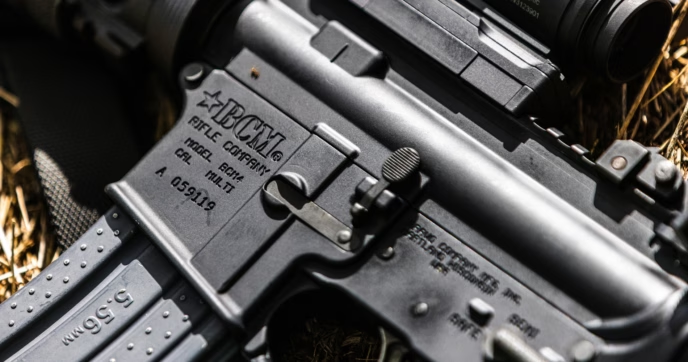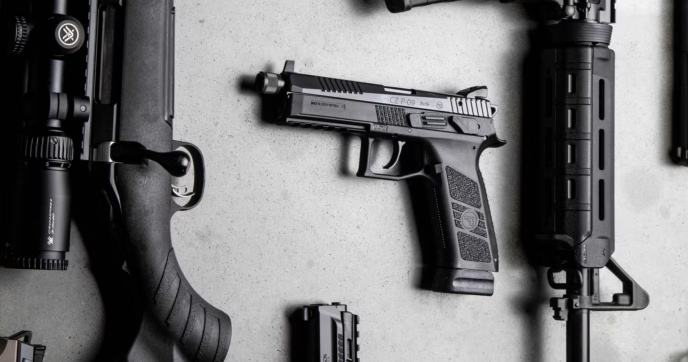Bullpup shotguns are currently going through something of a renaissance. While once relegated to the realm of curios and range toys, a number of affordable, imported shotguns hitting the market combined with new entries from some of the industry’s most respected manufacturers have created a perfect storm of popularity for these unique firearms.
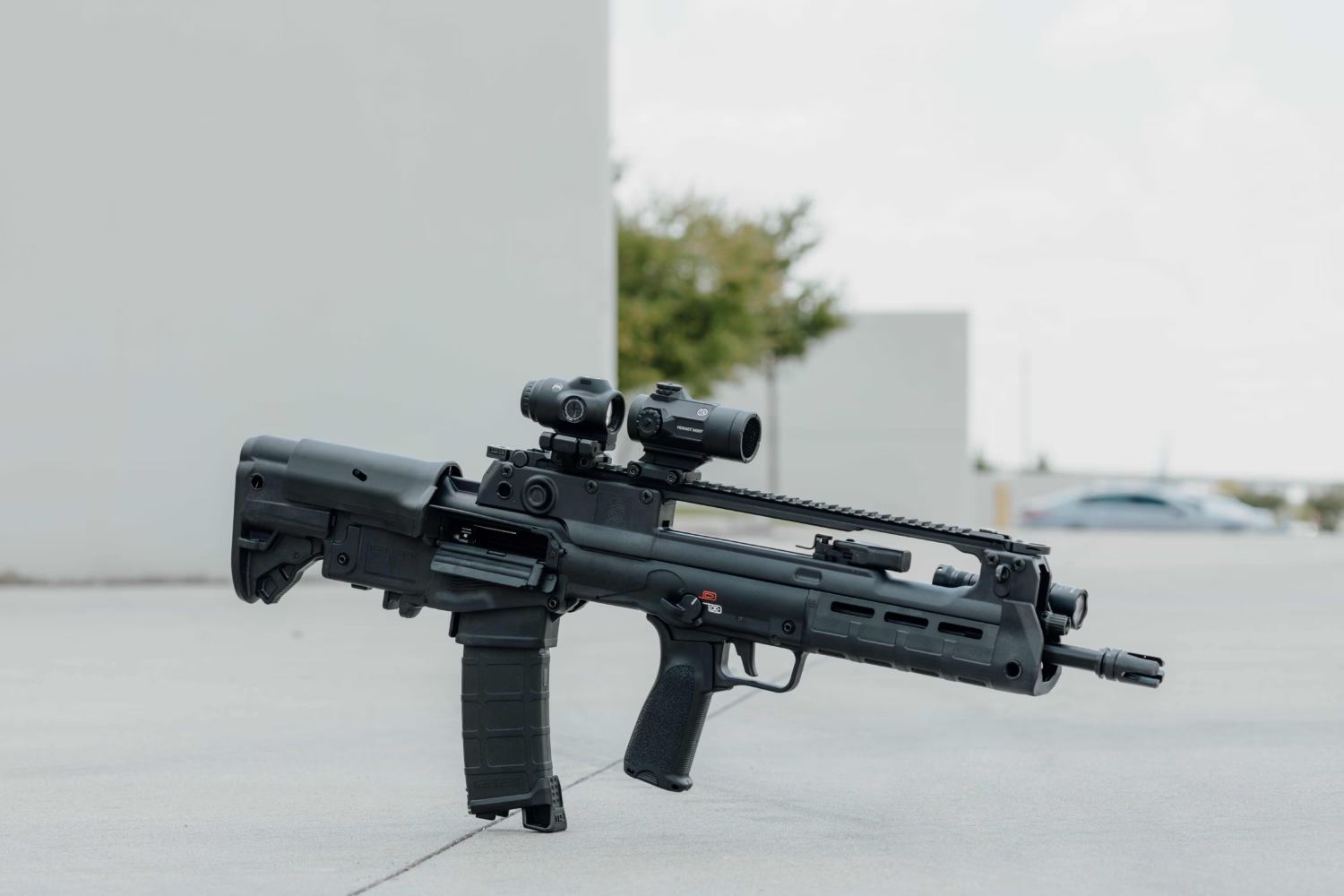
What is a Bullpup?
Most normal firearms are laid out in a very similar fashion. From front to back, you have the muzzle, the barrel, the action, the grip and trigger, and then the stock. It’s a layout that has been tried and tested since the days of flintlocks, and in most cases, it works very well.
A bullpup is a firearm that alters that configuration by relocating the action behind the grip and trigger so that it is nested in the stock. Assuming the barrel length stays the same, this shortens the overall length of the firearm considerably.
Bullpups are not exactly a new idea. The first functional bullpup rifle dates all the way back to 1901, while modern designs like the Steyr Aug and IWI Tavor being in military use for decades. Despite this, bullpups remain something of a niche product, with a few specific use cases in which they excel, at the price of a few drawbacks compared to more traditional designs.
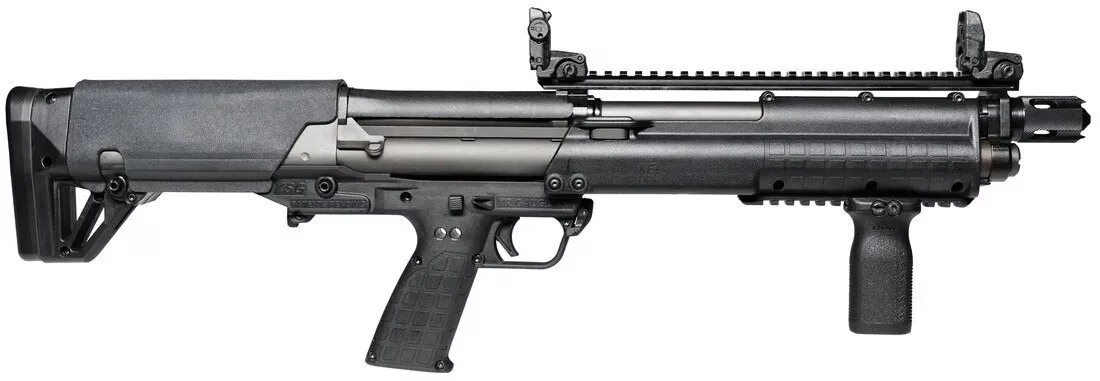
Pros of Bullpup Shotguns
One of the primary drawbacks of a traditionally-configured shotgun is the length. Shotguns are short-range, close-quarters firearms, particularly in a defensive context. As such, their long barrels are something of a detriment, making it difficult to maneuver indoors or around obstacles, and causing them to take longer to swing between targets.
Due to legal restrictions, shotguns are required to have an 18″ or longer barrel in order to avoid being registered as a Short-Barreled Shotgun and all the paperwork that comes along with that. This means that in a traditional configuration, a shotgun is inevitably a pretty long firearm and can get a bit unwieldy in tight confines.
Reconfiguring a shotgun as a bullpup allows manufacturers to meet the legal minimum barrel restrictions while still providing a shotgun that is compact and handy. Some models—including the Keltec KSG, one of the earliest examples of a bullpup shotgun—even manage to get as short as 26.1″ in overall length, which is just barely over the legal minimum overall length.
This compactness is the primary advantage of a bullpup shotgun. The short overall length makes them much easier to maneuver and swing more quickly. Relocating the action closer to the user’s body and behind their dominant hand also changes the firearm’s balance and ergonomics, which some users find that they prefer.
Bullpups also benefit from impressive velocity relative to their size. While it is possible to get a conventional shotgun in a short package by purchasing or manufacturing an SBS in accordance with NFA regulations, such a design would necessitate a much shorter barrel. Barrel length is directly correlated to velocity, so a traditionally configured shotgun with the same overall length as a bullpup would suffer from significantly reduced velocity and muzzle energy. A bullpup, on the other hand, has the exact same ballistics as any other 18.5″ shotgun.
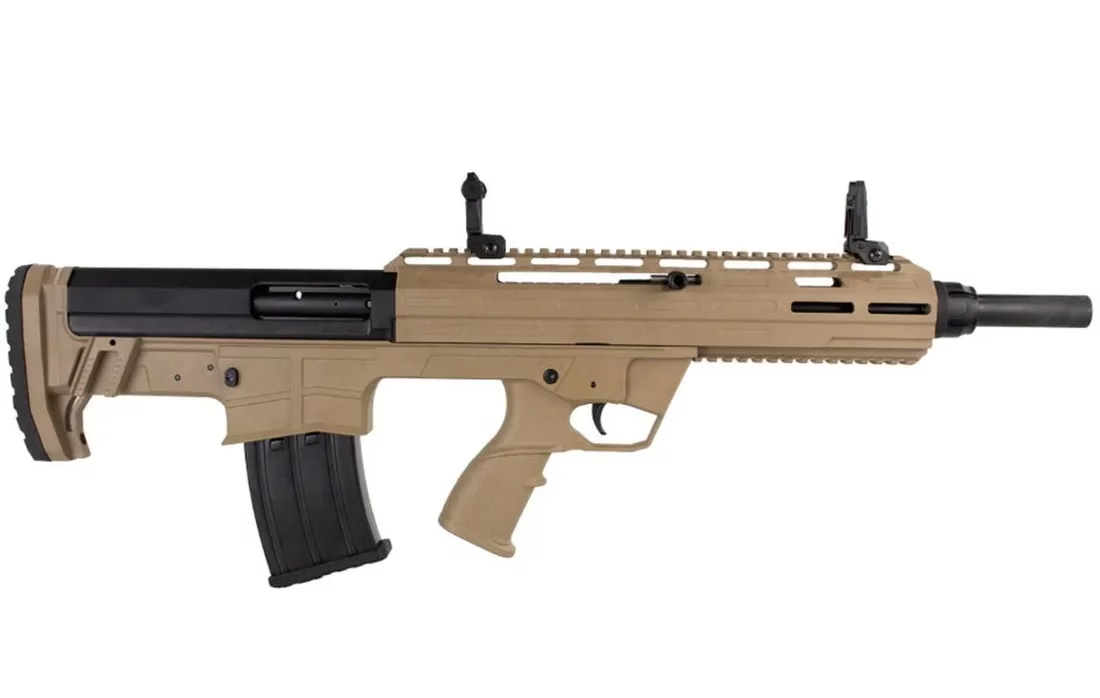
Cons of Bullpup Shotguns
All benefits come with trade-offs, and the compact nature of bullpup shotguns is no different.
The primary drawback of a bullpup shotgun is actually the same as one of its advantages: ergonomics. While relocating the action behind the user’s dominant hand moves the center of gravity closer to the user’s body and can increase stability when firing, it also makes reloading cumbersome and difficult. Reloads are inevitably slower with bullpup firearms than with their traditionally configured counterparts, and shotguns are already slow to reload at the best of times.
This limitation can be ameliorated somewhat by opting for a magazine-fed model, which will be faster to reload than manually inserting shells into the action one by one. But, even then, a bullpup magazine-fed shotgun will be slower to reload than a traditional mag-fed shotgun.
Another option to offset the slow reload is the prodigious capacity of many bullpup shotguns. Manufacturers have been exceptionally innovative in this regard, with many bullpup shotguns featuring multiple magazine tubes and double-digit capacities. While this doesn’t directly improve the slow reload time, it does make reloads fewer and farther between.
Ergonomics affect more than just reload times, though. Because the action is located behind the user’s dominant hand, any operation that requires you to be able to see or actuate the action is going to be more difficult. This is especially noticeable with clearing malfunctions and is further complicated by the non-standard location of the controls and manual of arms. While most standard-configurations shotguns have very similar controls and methods of clearing malfunctions, bullpups can be considerably more diverse, so significant training may be required to learn to clear malfunctions efficiently.
A secondary drawback to all bullpup firearms, not just shotguns, is that the design moves the action of the firearm closer to the user’s face. This means a closer proximity to the noise and gas of the gunshot, which some users may find uncomfortable. The issue is more pronounced with suppressed firearms but can be present with shotguns as well, even unsuppressed.
This also has the effect of making many bullpups all but unusable for left-handed operators. Most bullpup shotguns still employ a traditional ejection port on the right side of the firearm, which means that if fired left-handed, they would eject spent shells directly into the user’s face. This is far from a comfortable firing experience.
Certain models, though, do offer ambidexterity. The Kel-tec KSG, for example, ejects its shells straight down, making it a perfect option for left-handed users.
Bullpup Shotguns for Home Defense
The most popular application for bullpup shotguns is overwhelmingly home and personal defense. While they can and are used for sporting clays or hunting, they tend to perform rather poorly in these applications compared to their traditional counterparts.
For defense, on the other hand, the benefits of the bullpup design shine. They’re much easier to maneuver inside a home, but still offer the same ballistics as any other 18.5″ shotgun. Additionally, because much of the weight is located toward the rear of the firearm, they tend to be much easier to point, aim, and shoot one-handed, which makes it much easier to open doors or flip light switches in your home while maintaining control over your firearm.
Of course, shotguns in general have their pros and cons as home defense firearms. We’ve already covered that topic extensively in our article on Tactical Shotguns For Home Defense, so we won’t rehash it here.
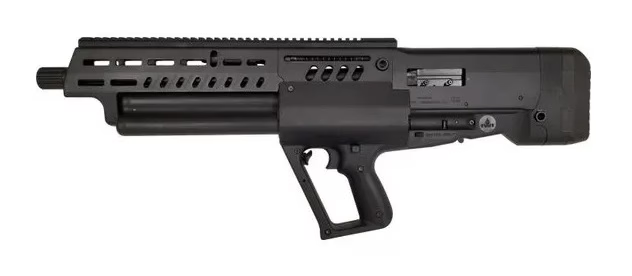
Popular Bullpup Shotguns
While we never like to single out any firearm as the “best”—that would be kind of like calling a hammer the best tool in your toolbox, which would inevitably come back to bite you the next time you need a wrench—there’s usually a reason why the most popular models are as commonplace as they are. Below we’ll take a look at some of the most popular bullpup shotguns currently on the market.
Keltec KSG-12
Arguably the progenitor of the modern bullpup shotgun craze, the KSG is a pump-action shotgun available from Keltec that packs an impressive amount of firepower into a pint-sized package.
The KSG features an 18.5″ smooth-bore barrel with a fixed cylinder choke, but Keltec does offer an adapter to allow it to take interchangeable chokes. A unique dual-tube feeding system allows the KSG-12 to pack a whopping 14+1 shells on board, with each tube being independently selectable. This means that users can load each tube up with different shells—buckshot in one, slugs in the other, or any other desired mix—then select between them on the fly using the toggle switch at the front of the firearms ejection port.
A full-length upper Picatinny rail provides ample space for mounting a reflex sight or other accessories, and the pump is even railed for the addition of foregrips or lights.
Tokarev TBP-12
A newer entry into the field of bullpup tactical shotguns, the Tokarev TBP-12 is a thoroughly modern firearm with space-age aesthetics and state-of-the-art features. It’s a semi-automatic magazine-fed design, which helps to counterbalance the slow reload time of bullpup designs.
The controls of this Tokarev bullpup shotgun are reversible allowing for easy operation for left-handed users, but the right-side ejection port is not, so we couldn’t truly call this firearm ambidextrous. Similar to the KSG, it sports an 18.5″ smooth-bore barrel and fixed choke.
Large top and bottom Picatinny rails offer plenty of room for a shotgun red dot and a weaponlight, making the TBP-12 the perfect base for a home defense shotgun build. Capacity is variable depending on the magazine used, with a 5-round magazine coming with the firearm and magazines with a capacity of up to twelve rounds available on the aftermarket.
Tavor TS-12
Tavor has a long history with bullpup firearms. Their SAR and X95 rifles both boast a military pedigree, and with the expertise gained from years spent working on those platforms, they now bring us the TS-12—arguably one of the best semi-automatic shotguns on the market.
The Tavor TS-12 is a 12-gauge semi-automatic shotgun, but unlike most semi-autos, it is not magazine-fed. Instead, Tavor opted for an innovative three-tube rotating internal magazine. Similar to the design of the KSG, each tube is separate and self-contained. Unlike the KSG, the Tavor utilizes three magazine tubes, not two, and each can hold up to 5 shells.
The Tavor shotgun‘s magazine tubes can be manually rotated to switch between tubes, allowing users a whopping 15+1 capacity. Like the KSG, each tube could be loaded with different ammo types, but because the tubes rotate, users would have to take great caution to keep track of which tube contained which shells, so it’s generally advisable to pick your desired load and fill up all three tubes with it.
Like the other shotguns on our list, the Tavor features a full-length Picatinny top rail for optics and accessories. Because the rotating magazine tubes form the lower portion of the handguard, a bottom Picatinny rail is not possible, but the Tavor makes up for it by integrating side MLOK slots into the design, leaving plenty of room for mounting a weaponlight or aiming laser.
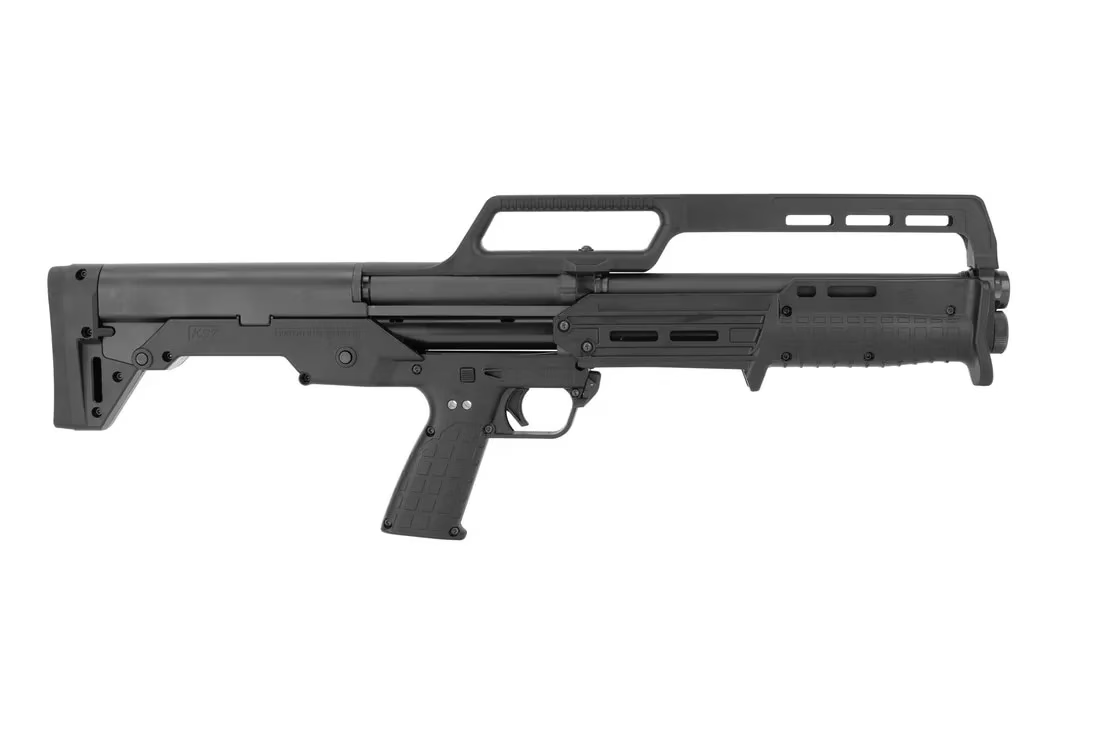
Conclusion
Bullpup shotguns are a niche firearm, but they fill that niche exceptionally well. While they may never offer the versatility we know and love from traditional shotguns, they make excellent defensive firearms and offset some of the inherent disadvantages created by the overall bulk inherent to shotguns.
In sum, for the purpose for which they were created, bullpup shotguns are an excellent option.
